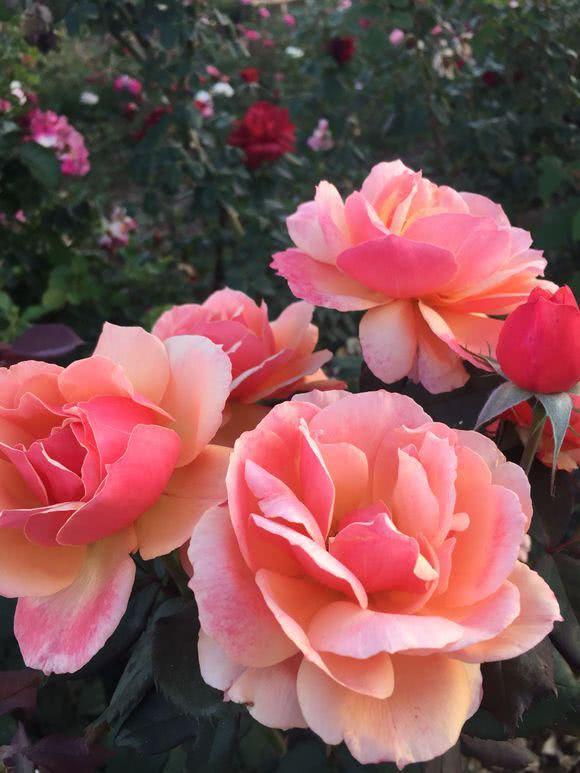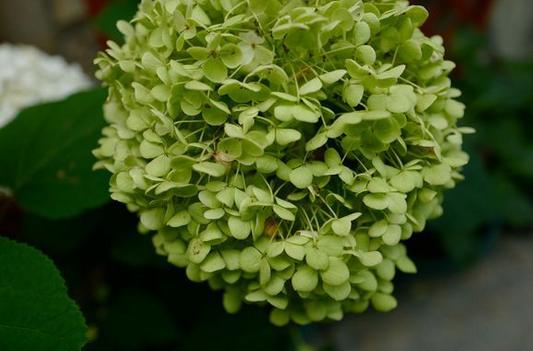Give the rose a bath and feed some medicine in summer. It's spectacular.

The weather now, the south has exceeded 35 degrees, not enough or will rain once a week, but also to give us these born in the furnace city flower friends a little welfare! Summer rose, also want to pay attention to a little bit, give it a bath, feed some medicine, open also unusually spectacular.
Because the weather is hot, plus the ash layer stuck to the leaves, rose roots and suffocated, leaves breathing is not smooth, of course, to the problem, rose leaves like human skin pores, if all blocked, will be sick, so the summer first to wash the rose bath, bath method is relatively simple, is to use a large spray pot drenching water, continuous spray, the ash layer on the leaves will be washed away, it is best to spray twice a day, morning and evening once.
Another advantage of spraying water on roses was that they cooled down. This weather was not something that ordinary plants could withstand. Therefore, proper watering was still very beneficial to plants. Spraying evenly would not cause the pot soil to be partially wet, the roots to be damaged, and the plants to not flourish because of rapid watering.
Summer is also a high incidence period for the breeding of pests and diseases. At this time, it is necessary to feed the roses properly. The most common one is disinfection, because many diseases are caused by fungal infection, such as leaf spot disease, dead leaf disease, black spot disease, powdery mildew, etc., which may not be obvious at first, but the damage to the plants will be more serious slowly. It may be troublesome to treat them again at this time. Therefore, the best way is to pour a 1000-fold carbendazim solution to the rose once a month, which can play a good role in sterilization.
In addition, it is necessary to supplement enough fertilizer to rose properly. It is rich in nitrogen, phosphorus and potassium, rich in humus and trace elements. It is an essential nutrient element for rose. Organic fertilizer fermented by sugarcane stalk has rich and balanced nitrogen, phosphorus and potassium content. It adds various organic matter, minerals and amino acids to promote plant growth, vigorous flowering, green leaves and enhanced resistance.
In addition, before the arrival of summer, comb dense branches, sick branches, so that the rose can be well ventilated, not infected by sick branches, some residual branches, or fallen leaves in the pot soil, but also properly pruned.
- Prev

Some fragmentary thoughts of beginners raising hydrangea
I have heard many flower friends complain that hydrangea flowers are easy to grow and bloom. When it comes to me, how is it not like this? it is not long before a good hydrangea is bought back, and it has become a sick look. Don't.
- Next

Goldilocks flowers are like flying phoenixes, vivid and vivid, like a Phoenix flying.
Buttercup (one of the plants of the genus Euphorbia) (scientific name: Caesalpinia pulcherrima (L.) Sw.: large shrubs or small trees; up to 3 m tall, with green or pink-green branches, with sparse spines. Bipinnately compound leaves 4 to 8 pairs, yes.
Related
- Wuhan Hospital Iron Tree Blooming Result Was Instantly Frightened by the Gardener Master
- Which variety of camellia is the most fragrant and best? Which one do you like best?
- What is the small blue coat, the breeding methods and matters needing attention of the succulent plant
- Dormancy time and maintenance management of succulent plants during dormancy
- Minas succulent how to raise, Minas succulent plant pictures
- What are the varieties of winter succulent plants
- How to raise succulent plants in twelve rolls? let's take a look at some experience of breeding twelve rolls.
- Attention should be paid to water control for succulent plants during dormant period (winter and summer)
- Watering experience of twelve rolls of succulent plants
- Techniques for fertilizing succulent plants. An article will let you know how to fertilize succulent plants.

